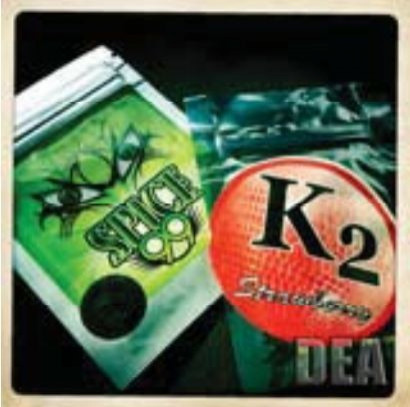Synthetic Marijuana Use Rises, Sends More Teens to Hospital

More and more teens are turning to synthetic marijuana in search of a legal high, but often end up in the emergency room, according to a new study. Synthetic marijuana - a combination of plants and herbs sprayed with chemicals that give a marijuana-like effect - is available to teens under brand names such as K2, Spice and Blaze.
Experts attribute at least a dozen deaths from the new high that can cause long-lasting psychotic episodes, uncontrolled movements and severe anxiety.
Physicians examined three teens who went to the emergency room after using synthetic marijuana. The teens suffered from symptoms similar but much more serious to marijuana use, such as rapid heartbeat, high blood pressure, excessive sweating and agitation. The case study will be published in the April edition of the journal Pediatrics.
When we suspected the use of synthetic marijuana in these patients, we soon realized that there is little information about this drug in the medical literature, Dr. Joanna Cohen, lead author and associate professor of pediatric emergency medicine at Children's National Medical Center, said in a statement.
Synthetic marijuana is relatively new, so emergency room doctors do not always recognize the symptoms, the authors wrote. Understanding and recognizing its symptoms will increase treatments for the rising number of synthetic marijuana patients , they wrote.
The American Association of Poison Control Centers received almost 7,000 calls related to side effects from synthetic marijuana use, more than double the number of calls received in 2010. The organization received 640 calls about the drug as of Jan. 31.
It's important for providers and parents to recognize the signs of drug use and to try and prevent repeat use, Cohen told ABC News. The effects on developing brains can be severe.
Synthetic marijuana is popular since it doesn't show up in urine tests, according to the study. Tests for the substances are not readily available and are costly.
The Drug Enforcement Administration imposed an emergency one-year ban on five substances commonly used in synthetic marijuana in March 2011 and extended the ban another six months on March 1 in order to enact permanent control. Eleven states have banned the synthetic substances completely and six others are considering legislation as well, according to the New York Times.
However, many manufacturers replace the banned substances with other legal ones and continue to sell.
The truth is these products are a guise for a very scary and potent drug, Arthur Dean, chairman and CEO of Community Anti-Drug Coalitions of America, who was not involved in the study, told WebMD. We hope that an even more aggressive and permanent solution can be found to the problem.
Synthetic marijuana is readily available online for around $9 per gram and is often marketed as herbal incense.
© Copyright IBTimes 2024. All rights reserved.





















